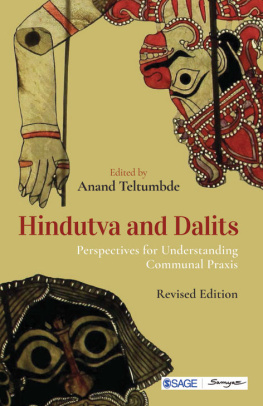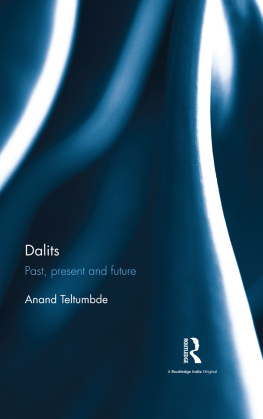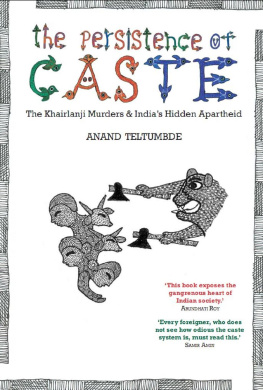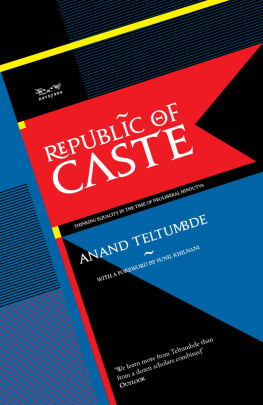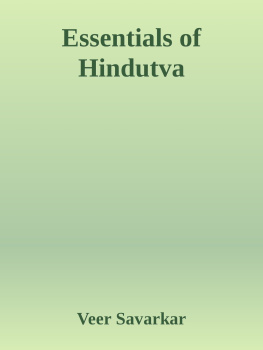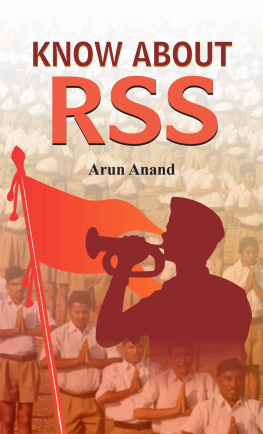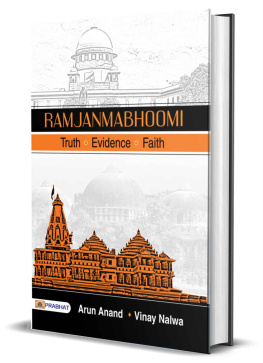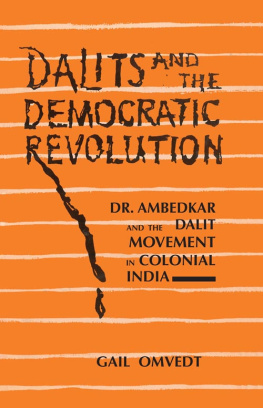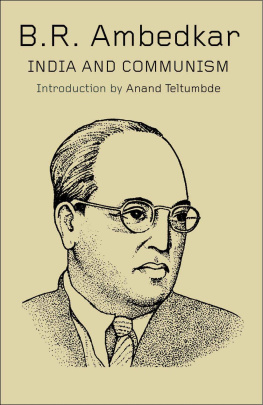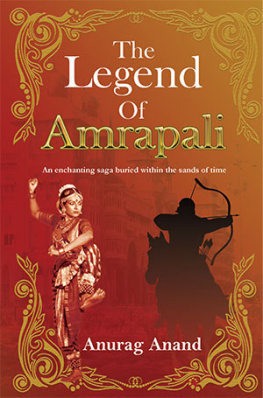Anand Teltumbde - Hindutva and Dalits
Here you can read online Anand Teltumbde - Hindutva and Dalits full text of the book (entire story) in english for free. Download pdf and epub, get meaning, cover and reviews about this ebook. year: 2020, publisher: SAGE Publications, genre: Politics. Description of the work, (preface) as well as reviews are available. Best literature library LitArk.com created for fans of good reading and offers a wide selection of genres:
Romance novel
Science fiction
Adventure
Detective
Science
History
Home and family
Prose
Art
Politics
Computer
Non-fiction
Religion
Business
Children
Humor
Choose a favorite category and find really read worthwhile books. Enjoy immersion in the world of imagination, feel the emotions of the characters or learn something new for yourself, make an fascinating discovery.
- Book:Hindutva and Dalits
- Author:
- Publisher:SAGE Publications
- Genre:
- Year:2020
- Rating:4 / 5
- Favourites:Add to favourites
- Your mark:
- 80
- 1
- 2
- 3
- 4
- 5
Hindutva and Dalits: summary, description and annotation
We offer to read an annotation, description, summary or preface (depends on what the author of the book "Hindutva and Dalits" wrote himself). If you haven't found the necessary information about the book — write in the comments, we will try to find it.
Hindutva and Dalits — read online for free the complete book (whole text) full work
Below is the text of the book, divided by pages. System saving the place of the last page read, allows you to conveniently read the book "Hindutva and Dalits" online for free, without having to search again every time where you left off. Put a bookmark, and you can go to the page where you finished reading at any time.
Font size:
Interval:
Bookmark:
SAGE was founded in 1965 by Sara Miller McCune to support the dissemination of usable knowledge by publishing innovative and high-quality research and teaching content. Today, we publish over 900 journals, including those of more than 400 learned societies, more than 800 new books per year, and a growing range of library products including archives, data, case studies, reports, and video. SAGE remains majority-owned by our founder, and after Saras lifetime will become owned by a charitable trust that secures our continued independence.
Los Angeles | London | New Delhi | Singapore | Washington DC | Melbourne
Perspectives for Understanding
Communal Praxis
Revised Edition
Edited by
Anand Teltumbde

Copyright Anand Teltumbde, 2020
All rights reserved. No part of this book may be reproduced or utilized in any form or by any means, electronic or mechanical, including photocopying, recording or by any information storage or retrieval system, without permission in writing from the publisher.
First published by SAMYA, an imprint of Bhatkal and Sen, 16 Southern Avenue, Kolkata 700026, in 2005
This revised second edition published in 2020 by
| |
SAGE Publications India Pvt Ltd B1/I-1 Mohan Cooperative Industrial Area Mathura Road, New Delhi 110 044, India www.sagepub.in | Samya 16 Southern Avenue Kolkata 700026 www.stree-samyabooks.com |
SAGE Publications Inc 2455 Teller Road Thousand Oaks, California 91320, USA | |
SAGE Publications Ltd 1 Olivers Yard, 55 City Road London EC1Y 1SP, United Kingdom | |
SAGE Publications Asia-Pacific Pte Ltd 18 Cross Street #10-10/11/12 China Square Central Singapore 048423 |
Published by Vivek Mehra for SAGE Publications India Pvt Ltd. Typeset in 10/12 pts Calisto MT by Fidus Design Pvt Ltd, Chandigarh.
Library of Congress Control Number: 2019954519
ISBN: 978-93-8134-551-1 (ePub)
SAGE Samya Team: Amrita Dutta, Vandana Gupta and Aritra Paul
To all those who are struggling against
the resurgent casteism and communalism in the country
to preserve the idea of India.

Thank you for choosing a SAGE product!
If you have any comment, observation or feedback,
I would like to personally hear from you.
Please write to me at
Vivek Mehra, Managing Director and CEO, SAGE India.
Bulk Sales
SAGE India offers special discounts
for purchase of books in bulk.
We also make available special imprints
and excerpts from our books on demand.
For orders a nd enquiries, write to us at
Marketing Department
SAGE Publications India Pvt Ltd
B1/I-1, Mohan Cooperative Industrial Area
Mathura Road, Post Bag 7
New Delhi 110044, India
E-mail us at
Subscribe to our mailing list
Write to
This book is also available as an e-book.
H indutva and Dalits , a collection of sixteen thoughtful chapters, was first published in 2005, under the shadow of the Gujarat massacres of 2002. Its purpose was a searing one: to probe why subaltern and marginalized Dalits and Adivasis joined in violent attacks against a vulnerable minority community, instead of making common cause against them as a rainbow coalition of threatened people. More than a decade later, in the wake of the second NDA government being sworn in, the collection has gained in relevance. The editorial introduction tracks the changes that have occurred in the intervening years and it also historicizes the DalitHindutva relationship.
Some of the chapters trace the history and the ideological apparatus of Hindutva forces. Others study, in close detail, the emergence of an unlikely alliance between Dalits and Hindutva power in places as different as Maharashtra, Gujarat, Uttar Pradesh, Andhra Pradesh, Tamil Nadu, Punjab, Karnataka and Kerala. In the process, we get a richly textured analysis of Hindutva mobilization tactics, strategic calculations and flexibility. We also see the varied forms of Dalit politics and movements: Ambedkarite and Periyarite radical social revolutionism, accommodation with Congress politics in its KHAM (KshatriyaHarijanAdivasiMuslim) phase, the upsurge and decline of Dalit Panther militancy, autonomous Dalit electoral parties and an embrace of the Hindutva agenda at different points of time. There is no linearity in the process. Instead, different stories have unfolded at different paces at different points of time. Some situations promise a relatively hopeful Dalit response to Hindutvaas in Tamil Nadu, for instanceand answers are sought in its historical and political specificities. Some seek to establish intersecting forms of subordination: as Dalit women face and resist upper caste and Hindutva backlash, for instance. Some focus on Hindutva and bring out startling evidence of blatant casteism in the writings of its leading ideologues. Others look closely at how Hindutva operatives have worked and grown among Dalits and Adivasis in a Left-dominated region like Kerala. Many seek to correlate the rise of Hindutva politics to the spread of neoliberal reforms in interesting ways. Most essays also reflect on how political parties opposed to the BJP have failed to provide an alternative organizational and ideological drive that could have countered it.
The essays, therefore, cover a vast and complex area of Indian politics and history. In varied ways, and from different sites, they collectively ask a critical question. Why and how do Dalits and Adivasis endorse a politics that is certain to pose threats to themselves? That question is key to understanding hegemony in general; and Hindutvas hegemonic agenda in particular: where subalterns develop a stake in their own subordination and accept the ruling ideology of the dominant forcesnot in resignation or despair but in eager self-identification with it.
In the Indian case, Sanskritization and upward mobility through communal violence, as well as the erosion of working class cross-community solidarities and shared workplaces under neoliberal assaults on large industries, are some of the important answers. There are incisive accounts of growing internal stratification among Dalits which leads the upper stratum to make common cause with Hindutva and to distance themselves from progressive social movements. The book provides a strong sense of how the Hindutva agenda actually offers little of substance to Dalits. It certainly never sought structural transformation in their social and material deprivation, nor led movements against their cultural stigmatization. Yet, through a policy of symbolic incorporation within the Hindu community, it has emerged as a strong political option among some Dalit leaders and ideologues.
In the 1990s, when Hindutva first became a mass movement on a national scale, the great secular hope was that the growing democratization of the Indian electoral systemwhere for the first time, subaltern castes came to prominence on their ownwould help stem the tide of communal politics. Forces released by the Mandal Commission recommendations, and the agitations around it, would stop the advance of Mandir-based mass mobilization. Two decades on, the hope seems a forlorn one.
Next pageFont size:
Interval:
Bookmark:
Similar books «Hindutva and Dalits»
Look at similar books to Hindutva and Dalits. We have selected literature similar in name and meaning in the hope of providing readers with more options to find new, interesting, not yet read works.
Discussion, reviews of the book Hindutva and Dalits and just readers' own opinions. Leave your comments, write what you think about the work, its meaning or the main characters. Specify what exactly you liked and what you didn't like, and why you think so.

